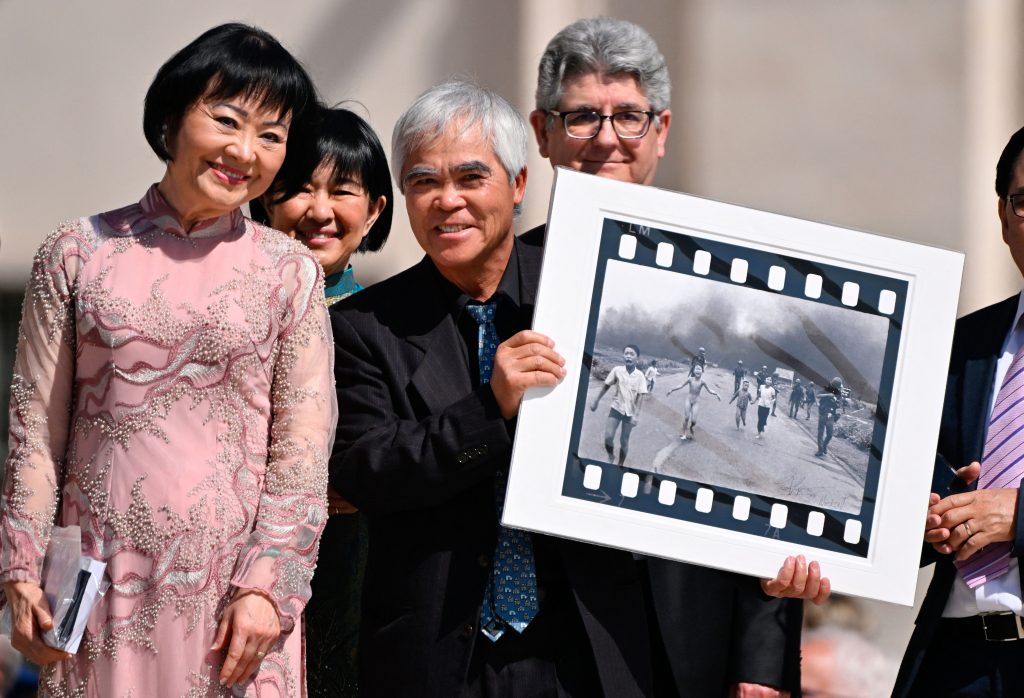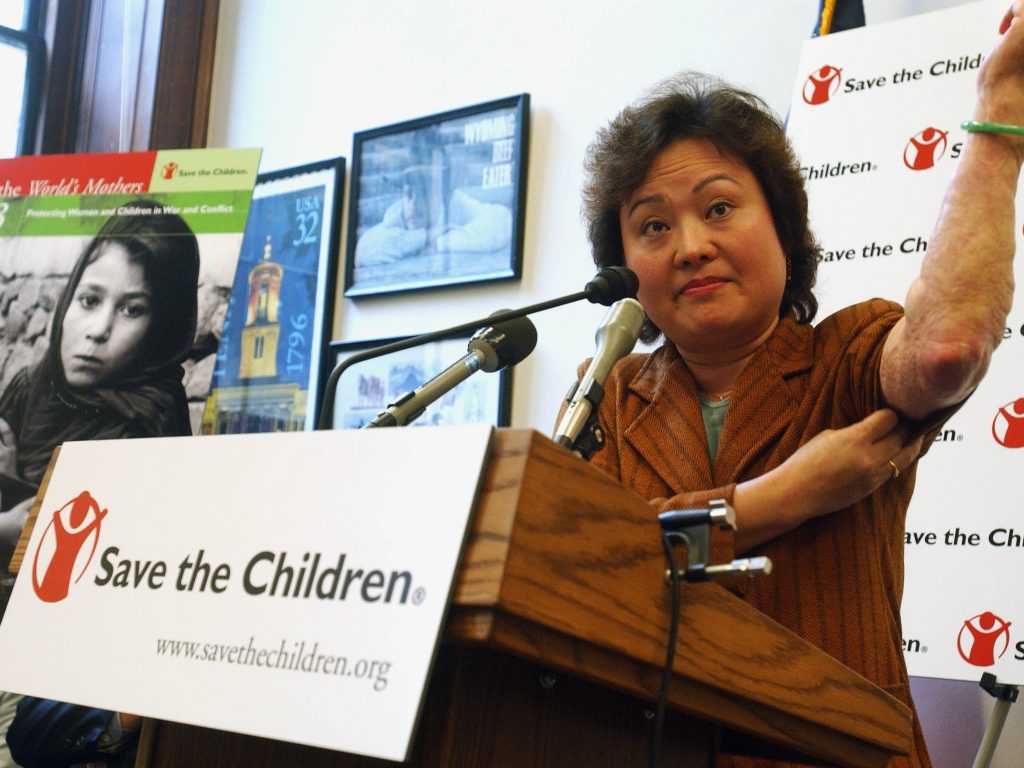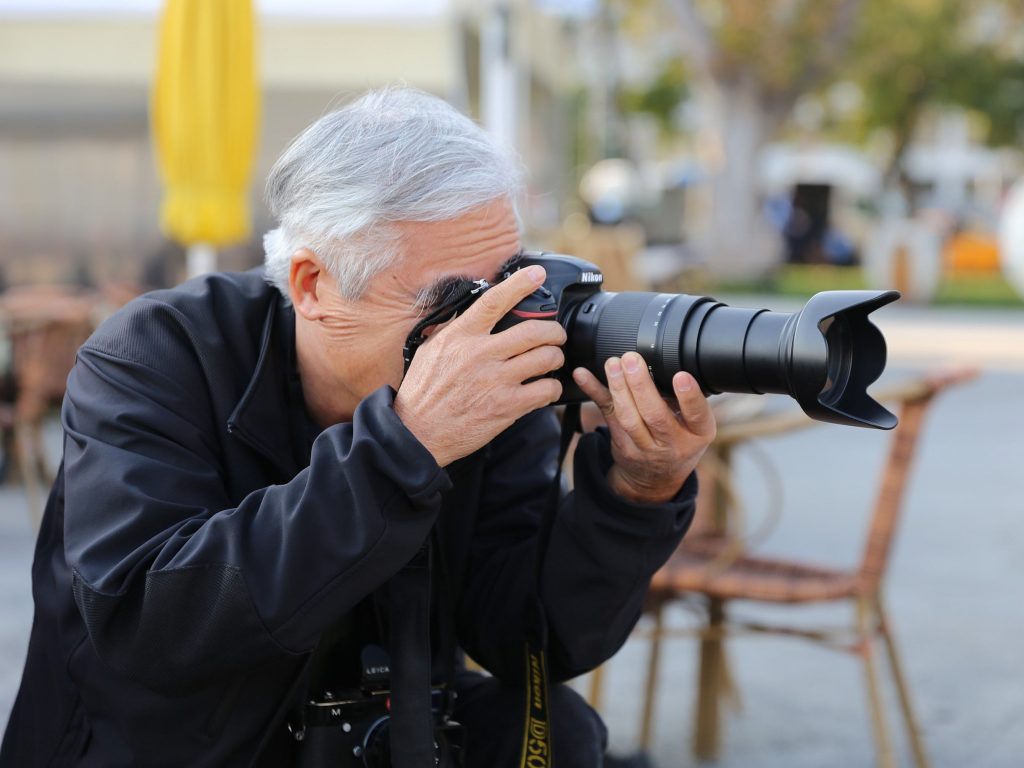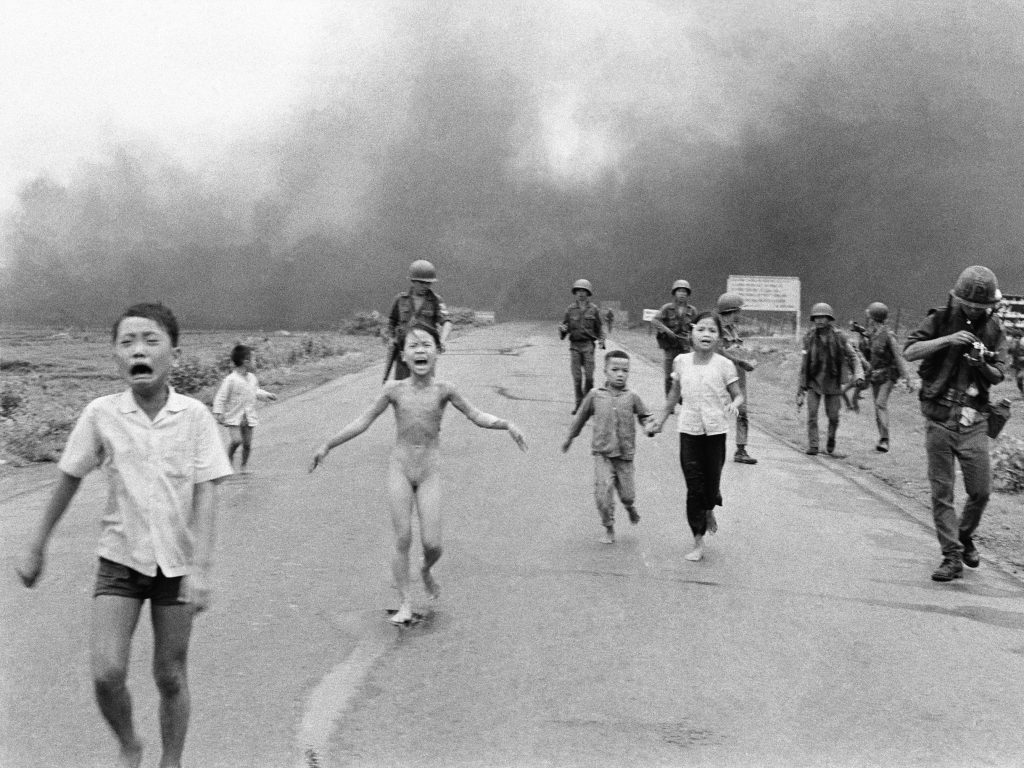- After taking a photo of 9-year-old Kim Phuc screaming in pain, photographer Nick Ut saved her life.
- Kim Phuc said she first "hated" the photo and was "embarrassed" the world saw her naked and in pain.
- Nick Ut and Kim Phuc became become lifelong friends in the wake of the iconic "Napalm Girl" photo.
After spending 14 months in the hospital recuperating from burns on 65 percent of her body, Kim Phuc finally saw the photo of herself that haunted the world. "I came home and my dad showed me my picture, cut from a Vietnamese newspaper, for the first time," the 59-year-old told Insider from her home outside Toronto. "I was so embarrassed. I saw my face in agony, crying, naked. I hated that picture."
The single searing image didn't just change the youngster's life; as it landed on the front page of numerous international newspapers, it changed the world and altered the course of the Vietnam War itself.
On June 8, 1972, Phuc was a 9-year-old growing up in the shadow of the Vietnam War when a sudden and deadly napalm bomb dropped from overhead in the tiny village of Trang Bang. The aerial attack by South Vietnamese Air Force Skyraiders singed her lithe little body, sending her screaming down Highway 1 after ripping off her clothes. While flanked by her brothers and cousins, the pain of her stark naked silhouette pleading in agony is palpable.
If not for a plucky 21-year-old photographer, the gut-wrenching moment could have been lost to history, and Phuc could have lost her life.
The singular image, officially titled "The Terror of War," but colloquially known as "Napalm Girl," transformed both their lives, and forged what would become a lifelong bond between photographer and subject. But every step in the path to publishing the iconic Pulitzer Prize-winning image was heart-stopping.
A photograph snapped — and a life saved
Nick Ut, also Vietnamese, was an AP photographer working the bloody war for years — with multiple near-death experiences.
After taking the photo, he saw Phuc's grave distress — her skin was coming off as she wailed "I'm dying" — and sprung into action. "I look at Kim and the children, and I couldn't leave her to die," Ut told Insider. He personally delivered her to the hospital, using his media muscle to ensure she receive medical attention amidst an overwhelmed medical staff. (She was placed in a morgue after being written off as too injured to survive.)
Ut not only captured the tragic toll of war on innocents, but he saved the young girl's life. Yet the world was nearly deprived of seeing the bitter realities of war.
"They said, 'I don't think we can use it,'" he recalled of some editors, who asked him to retouch the visceral image because of the nudity. But the original image ran intact, leading to much hand-wringing about US involvement, and ushering the end of the 20-year battle some two years later.

Phuc was forever grateful. "He is my hero. I owe him — for the way that he not only took my picture, but for saving my life. He put down his camera and brought me to the hospital."
Ut felt the same way.
"After I took Kim's photos, I saved her life, and I wanted Kim to be like family," Ut, 71, told Insider. It would be another 17 years before they would reunite — with Ut fleeing post-war Vietnam and Phuc "stuck" there — but the connection was unbreakable. At their meeting in Cuba where she was studying medicine, Phuc longed to tell her beloved "Uncle Ut" how she yearned to flee their homeland like he did. He fled in 1975 after the fall of Saigon and moved to LA two years later in 1977.
But surveillance by the embassy forced a superficial confab. "I wanted to scream, 'Uncle Ut, help me,' but I knew we'd be in trouble," said Phuc, noting that after safely defecting to Canada in 1992, Ut could finally say to her, "I'm so happy you have freedom."
Both photographer and subject ended up in North America, and stayed close despite the distance
Granted political asylum thousands of miles from her oppressive homeland, she settled near Toronto with her Vietnamese husband and went on to become a mom of two boys and a globe-trotting UNESCO Goodwill Ambassador.
Ut married and had two children, putting down roots in Hollywood and shooting for the AP for decades. The camera he used to shoot Phuc, a Leica M2 with 35-mm. f2 lens, was left for history in a museum in Washington.
"When I got freedom in Canada I wanted to escape that picture," said Phuc, whose feelings of sadness and hope often mingled. "I didn't like being that little girl in that picture at all," she said. "I didn't feel like my life belonged to me."

As much as her outward identity was shaped by "Napalm Girl," Phuc, who's been through 17 operations and 11 laser treatments, strived to cultivate her own personal constitution on her own terms.
But a new perspective evolved from freedom and motherhood. "I have freedom and I can protect children around the world," she said. For all its horror and humanity, Phuc made peace with the photo and all it represented, with anger giving way to acceptance — and ultimately gratitude: "I went back to embrace that picture and work with it for peace. That moment became a powerful gift for me."
An image with a lasting impact
The impact and resonance of the photo was felt for decades. "Vietnam War veterans said to me, 'I came home early because of your picture. I didn't want to die in Vietnam,'" Ut recalled of being approached in public over the years.
The image captures how children suffer in warfare, and also the horrifying effects of napalm, a flammable jelly-like substance developed by a US chemist that when ignited burns through skin and tissue, inflicting life-long disfigurement and suffering on those it does not kill. The US and South Korea used napalm extensively to set fire to North Vietnamese and Viet Cong fighters and their often concealed routes. But concerns about its terrifying affects persuaded the US to destroy its stocks and agree in 2009 not to use it and other incendiaries except against military targets.
Ut and Phuc would go on to visit the Vietnam War Memorial together in Washington and meet the Queen Elizabeth some 20 years ago. This month they had an audience with the Pope, who was given a signed, framed photo of "Terror of War."

Amidst a recent controversy around the photo, when Facebook briefly removed it for violating its standards in 2016, Phuc fought back, insisting on the image as a force for good. "I gave a statement. I say, 'That picture is not the way you think. That picture records the moment and shows the horror that children suffer.'"
It was reinstated shortly later.
As the seminal 50th anniversary nears, it's a mix of complicated emotions while taking stock of their lives and the world. Phuc and Ut will appear together in NYC at Fotografiska Museum to discuss iconic war photography etched in the public consciousness before friends and colleagues.
Her hard-won lessons of survival are more relevant today than ever. As images from Ukraine emerge, including a parade of images of children injured and fleeing, Phuc channels her half-century worth of wisdom: "I was one of the millions of children who got hurt from war. Don't lose your hope," she said, noting the most important lessons from the tragedy of the Vietnam War, and the incomprehensible toll it took. "I have a life now – not a hateful, bitter life, but a loving life."
The scars she bears, both visible and hidden, propel her to toward life and healing.
"I'm so thankful I'm still alive. Fifty years ago I was a victim of war with regard to that picture," said Phuc. "After 50 years, I'm no longer a victim, I'm a survivor — calling out for peace."
The act of resilience, she said, is a choice.
"I always make a decision in my life — to be a victim with bitterness and hatred forever? No way, I have to make a decision to learn and move on."
